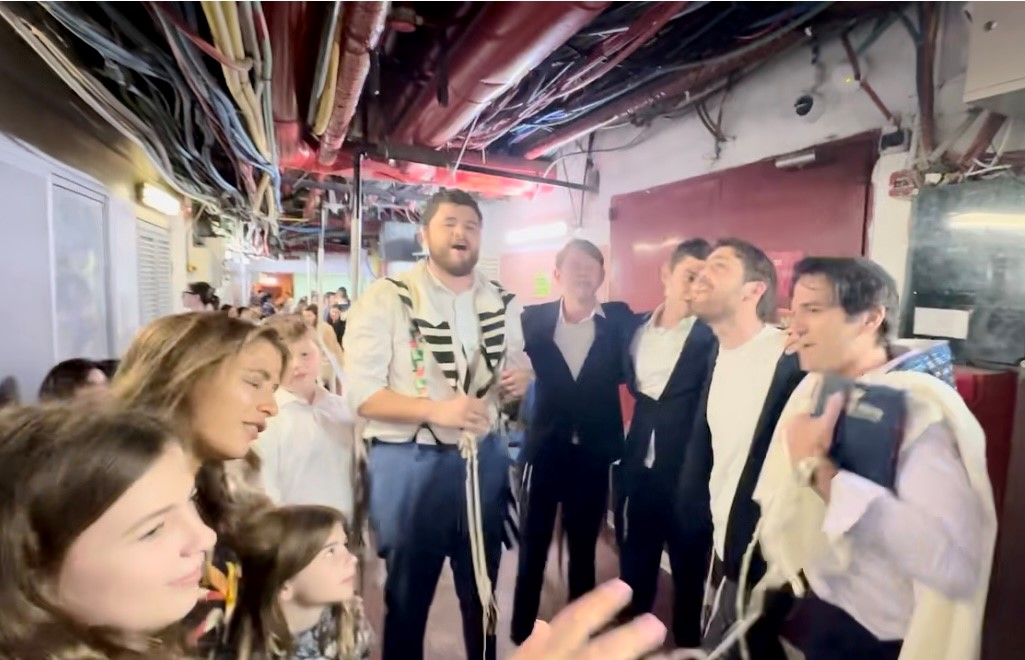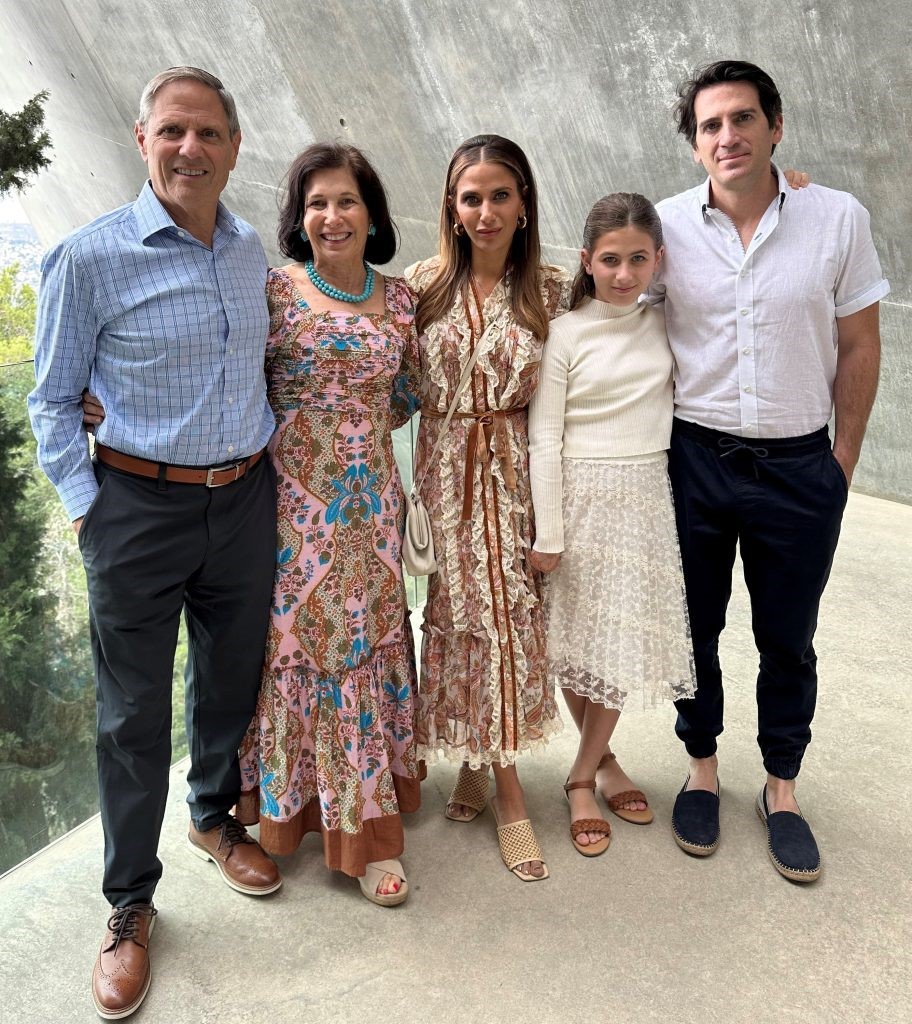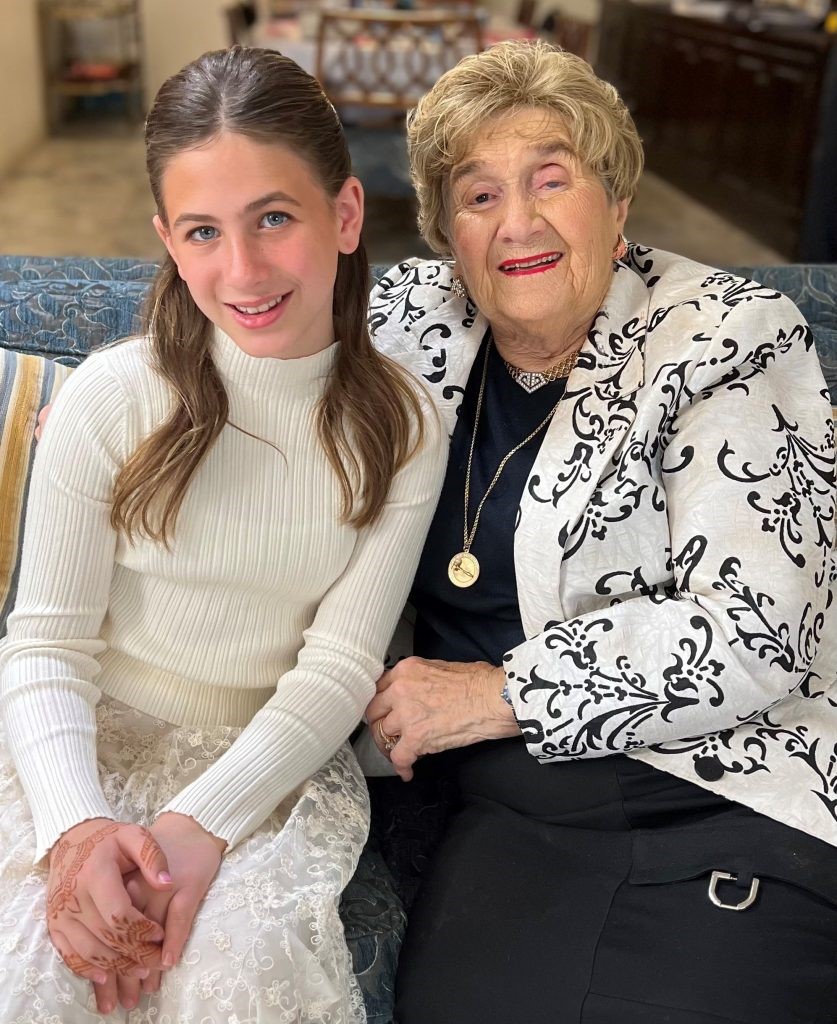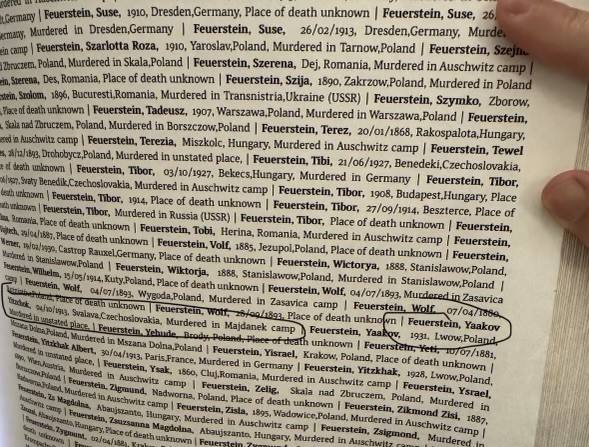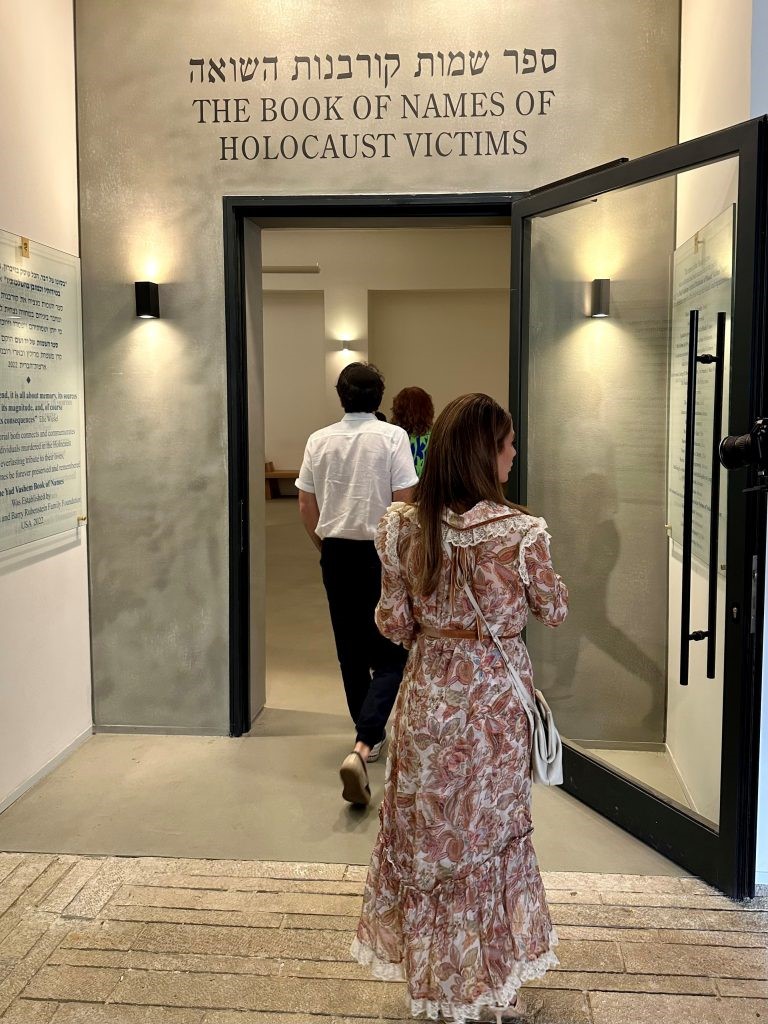We are living in historic times. It’s been two years since the horrific events of October 7, when Hamas terrorists committed the worst atrocities against Jews since the Holocaust. My family was there when Hamas attacked, hiding in a bomb shelter in Jerusalem’s King David Hotel. And here we are today, seeing the first signs of hope in over two years with the release of the 20 living hostages. My family is once again witnessing the events firsthand, back at the King David Hotel. The Hamas attack took place on one of our holiest days, Simchat Torah. Fittingly, sundown today is once again Simchat Torah. It’s the end of a two-year nightmare. Today we begin a new era.
Today is a day of reverence and celebration. Simchat Torah marks an ending and a new beginning: the ending of the one-year cycle of reading the Torah and starting all over again in Genesis with the creation of the world. Significantly, the first word of the Torah is “Bereshit,” “in the beginning.” It’s a time of prayer, but also a time of rejoicing. Picture the hundreds of peace-loving idealists celebrating the holiday with singing and dancing two years ago at the Nova Music Festival. Their innocence was stolen as Hamas raped, brutalized, killed 1,200, and took 254 hostages into Gaza. At long last, there’s hope. As we celebrate Simchat Torah this year, we are praying for an ending and a beginning: an ending to this inhumane chapter and the beginning of a brighter and more peaceful tomorrow.
We’ve been here before. When the Holocaust ended, we had hope for a brighter future as we returned to our biblical homeland of Israel. We said, “Never Again.” We’re still saying it, but now with more strength and fervor: “Never Again!” Given the parallels of the Hamas attack and the Holocaust, I am reprinting below my post from two years ago: “What I Learned at Yad Vashem, Israel’s Holocaust Memorial.” Yad Vashem refers to the Hand of G-d, the Almighty who reaches out and protects us. Come back in time with me to relive our day at Yad Vashem, a tour that happened just hours before the October 7 attack. The tour guide assured our granddaughter Stella that times were different now. We would never again experience atrocities as bad as a Holocaust. She was wrong. But I have faith that Yad Vashem, the Hand of G-d, will protect Israel.
My Post of October 17, 2023:
What I Learned at Yad Vashem, Israel’s Holocaust Memorial
As promised last week, I will continue sharing highlights and lessons learned from our week in Israel, a glorious week that came to a horrifying end as Hamas began a terror campaign aimed at eliminating Israel. Realizing that the goal of Hamas is to wipe Israel off the map, I reflect on why Israel must win this war, indeed why the world NEEDS Israel. We spent a day at Yad Vashem, Israel’s Holocaust Memorial. I’ll unpack some of the heart-wrenching revelations I learned there, but I’ll start with the overarching lesson from Yad Vashem: the six million Jews who were murdered had no place to go; other countries didn’t want them, and there was no Israel to take them in. Most say Israel exists now because the Holocaust happened. The reality is that the Holocaust happened because Israel didn’t exist.
The day began with my 10-year-old granddaughter Stella interviewing Rena Quint, a Holocaust survivor. Stella is embarking on a mission to teach the world, and young people in particular, about the Holocaust. She was alarmed to learn of the multitudes that either (1) believe the Holocaust is a hoax that never really happened or (2) have never heard of it and have no idea what it is. Unless we learn from history, we are doomed to repeat it.
Stella discovered that when Rena was Stella’s age, she had spent most of her childhood in a ghetto, a work camp, concentration camps, and a death march. Born in 1935 in Poland, Rena’s early years were spent in a loving home with her mother, father, and two brothers. Her entire family was murdered in the Holocaust; only she survived. She remembers the day her mother let go of her hand and told her to run. That day, the rest of her family went to their deaths. Rena was ultimately imprisoned in Bergen-Belsen concentration camp in April 1945. She managed to stay alive until the camp was liberated by the British. But there she was, a little girl Stella’s age, all alone in the world. Hearing Rena’s story of survival, strength, and faith propels Stella in her quest to educate us on where unchecked evil can lead. Indeed, after Stella ended her stay in Israel in a bomb shelter, her mission has become more critical than ever.
At Yad Vashem, we learned of another little girl Stella’s age. The story was told to us as we looked in a display case at a beautiful long braid of blonde hair that had once belonged to that little girl. As Nazis were coming for the family, the little girl’s mother convinced her daughter that where they were going, her long golden hair would become infected with lice. Her mother cut off the long braid, gave it to their neighbor (along with all their precious possessions) to hold until someday they’d return to retrieve them. The only family member to survive was the little girl’s brother. Years later, he returned to the neighbor to ask for his sister’s hair. They wouldn’t let him in, as they didn’t want to turn over the family’s silver, china, jewelry, and other precious items. The boy stood at the door and begged; he only wanted his sister’s hair. They could keep the rest. They slipped the braid through the door and then shut him out. He left with a priceless memory of his sister that he later donated to Yad Vashem, the Holocaust Memorial.
The tour then became very personal to Stella as she learned the fate of her father Ira’s family from Czechoslovakia. Ira’s ancestors were part of a desperation campaign by Hitler to kill as many Jews, as quickly as possible, when it became evident that they were going to lose the war. Hitler appointed Adolph Eichmann to mastermind the murder of 500,000 Hungarian and Czechoslovakian Jews in only 56 days. A number of Ira’s relatives were sent in cattle cars to Auschwitz, including his grandmother Miriam. Her job at Auschwitz was to sort the clothing of those who were sent into gas chambers. Miriam survived to tell the horror that, in sorting the clothes, she discovered her mother’s monogrammed head scarf. That’s how she learned that her mother (Ira’s great grandmother) had been gassed to death.
Our tour ended with a search through the Book of Names of Holocaust Victims, Yad Vashem’s chronicle of every known victim of the Holocaust. In that book, my son-in-law Ira discovered the name of his great uncle Yaakov Yitzchok Feuerstein, the man for whom Ira (Yitzchok in Hebrew) was named. Ira’s uncle was murdered at Majdanek concentration camp, along with his wife and baby.
Why do we need Israel today? When Ira’s family was part of the 500,000 Jews killed late in the war, the world by then was well-aware of the concentration camp killings. Nothing was done to save them. As Hitler’s Jew-hatred was spreading and Jews wanted out, no country would take them, except in small numbers. Hitler killed 6 million of Europe’s 9 million Jews, and 1.5 million of those killed were children. England reluctantly agreed to take in 10,000 kids, who had to come without their parents (imagine the fears of those kids and agony of their parents having to tell them goodbye, never to see them again). Had there been an Israel, there would have been a place to go. Today, Jews have a place to go. Israel, our ancestral homeland dating back to early Biblical days, will take us in. Today, more than half of the world’s Jews live in Israel.
The most effective way to wipe out a race is to kill all the kids. Hitler tried to do that. It’s taking decades to rebuild the Jewish population. Even today, the number of Jews is still not yet restored to the pre-Holocaust level. For most of their lives, survivors like Rena Quint missed out on the experience of sitting at a Shabbat table with three generations of a family. We are just now getting back to that.
So here we are again with enemies whose stated goal is to push us into the sea. Our tour guide at Yad Vashem told Stella, three days before the attack, that she was living in the best of times, that she would never see something as horrible as a Holocaust. The guide was wrong. Stella’s week in Israel was followed by the greatest loss of Jewish life since the Holocaust. But, this time, we have an Israel that has the might and fight to prevail. Israel must win this war. We owe it to Stella to give her a better future than her ancestors had. I call this weekly email series a “Family Legacy Planning” series. Stella is doing her part to preserve the legacy of her ancestors. Now that’s what I call Family Legacy Planning!
Marvin E. Blum
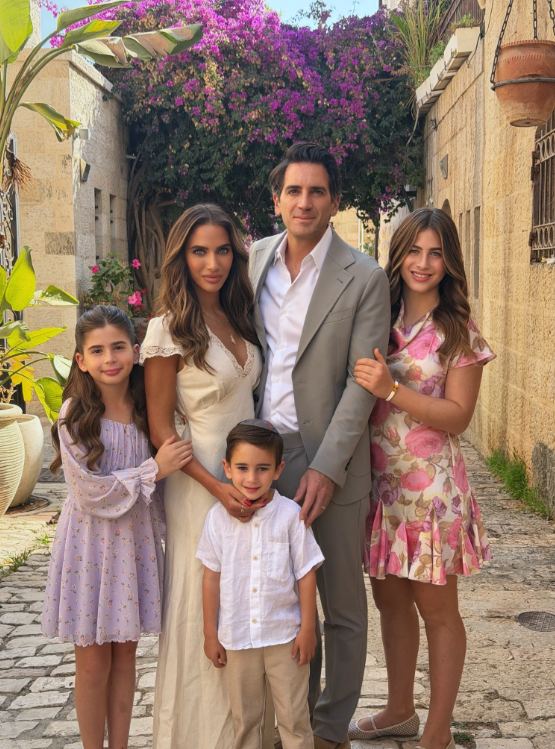
Marvin Blum’s daughter Lizzy Savetsky with husband Ira and children Stella, Juliet, and Ollie return to Jerusalem’s King David Hotel for this historic hostage release, two years after taking refuge in the hotel’s bomb shelter during the October 7 Hamas terrorist attack.
